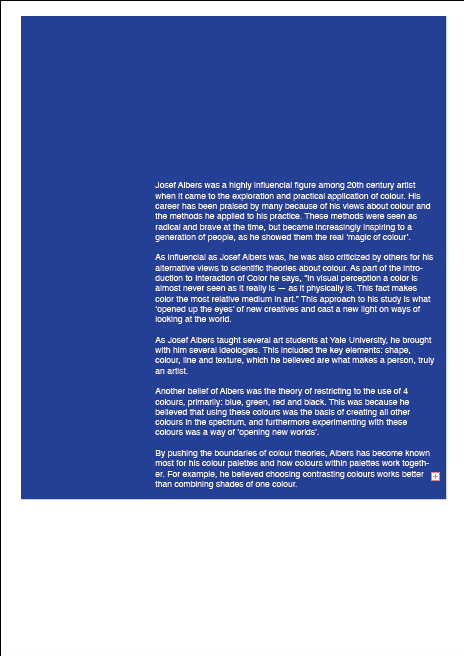Romek Marber Timeline
Romek Marber is a Polish designer, most notable for designing a grid system for Penguin books. Having seen several of his cover art pieces, the task will be to produce 3 cover slips that will use the same grid system, devised by Marber. For part of this book cover slip, designing a timeline of Romek Marbers important stages in his life will be required, therefore I have picked out some of the key moments to include in the designs.
- Marber is born in 1925 in Poland
- 1939 - he is deported to Bochnia ghetto
- 1942 - he is saved from being sent to the Belzec death camp by the commander of the forced-labour workshop in the town.
- 1946 - he arrives in the UK and is reunited with his brother and father.
- early 1950s, he attends St Martins.
- 1953 - he attends the Royal College of Art.
- While at RCA he joins a range of talented designers, including: David Gentlemen, John Sewell, Dennis Bailey and Ramond Hawkey.
- 1950s - he starts working on number of projects, including cover art for The Economist.
- 1961 - Germano Facetti commissions Marber to design covers for 'Our Language' and 'Language in the Modern World' by Simeon Potter.
- 1961 - Facetti asks Marber for a proposal of a new cover approach for the Penguin Crime series. Romek Marber then creates the Marber Grid system.
- Throughout 1960s and 70s this arrangement is used primarily by Penguin books
- 1965 - Marber's final crime novel cover for The Scarlett Letters by Ellery Queen.
- 1968/1969 - His last commissions for Angus Wilson novels were spoilt by insensitive lines of type applied by the publisher.



















































